Below are examples of companies we’ve partnered with, highlighting their unique challenges and how we helped transform their companies by solving them. From managing complex medical and dental IT infrastructures to secure, reliable Wi-Fi solutions for large events, our team delivers success. Each case study details early issues our clients faced, our approach strategy to problem solving, and quantifiable improvements experienced—though you’ll notice common themes shared by all include enhanced network security, increased operational efficiency, more integration and less redundancy. Discover how we’ve empowered businesses to thrive through technology.
Biocore
Biocore is a team of biomechanical engineers, consultants, and operations professionals whose mission is to prevent and mitigate injuries through research. Their client base is comprised of Fortune 500 companies ranging from the automotive sector to the US professional sports league promotions. Since their inception in the early 2000’s, Biocore has stayed on the cutting edge of technology, leveraging the latest artificial intelligence and machine learning capabilities to stay ahead of the curve.
Origins trace back to 2001, when a group of young University of Virginia professors began collaborating and publishing their work on the science of injury mechanics. Soon, their research began attracting the interests of big names ranging from General Motors to the National Football League.
In the company’s early stages, Top Notch was brought in to solve problems, bring order to the digital workflows, and build a scalable platform to grow for years to come. Skyrocketing requirements of cybersecurity, custody, and compliance would ultimately result in one of the most complex integrated systems of information technology deployed across the industry—Top Notch would go on to carry the firm through a migration, 2 physical expansions, and eventually a successful acquisition & integration.
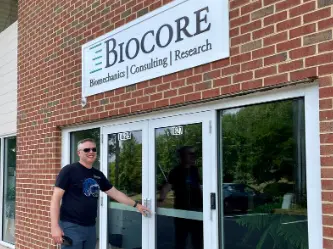
Challenges:
- Growing company lacking in both centralized data structure and security controls
- Increasing industry compliance demands
- Data storage swells by over 15TB/yr. on average
- Email & cloud services constrained by web host
- Complexity and size of network meant one server crash equals days of downtime
Scope of Engagement:
- Migrate data from NAS storage to central server with proper domain controls and data backup
- Free email and cloud environments from the clutches of ISP/web host by migrating to Microsoft Cloud
- Provide secure remote access for PCs, Linux and Macs
- Install high performance computational “cluster” for event modeling, with aggregate processing capabilities of 140 PCs.
- Build out identical servers in high-availability replication arrangement with storage arrays totaling almost 200TB
Outcomes:
- 10gbps network, interconnected with a 10gbps multi-mode fiber backbone
- Standardized onboarding and offboarding processes
- Proper data protection, cybersecurity, and business continuity solutions implemented, satisfying the compliance needs of customers and investors.
- Successful completion of a disaster recovery simulation
- Eliminated productivity barriers for work from home and traveling personnel
- Over 500% overall company growth reported over 12-year span of working with Top Notch
BRG Machinery Consulting
BRG is a nationwide group of mechanical engineers responsible for the design and development of many government and private-led aerospace initiatives. The team is considered best in class when it comes to the design and failure analysis of bearings, seals, turbines, and rotors. Clients range from government defense contractors to the well-knows energy titans operating in the US and abroad.
Challenges:
- Decentralized workforce model was employed, even pre-COV19
- Remote engineers must maintain access to the license server on main office LAN, for granting usage to expensive specialty design software, such as ANSYS or Solidworks. However, direct access to their hardware was a must, to harness the computing power graphics cards.
- Extremely stringent security and compliance demands
Scope of Engagement:
- Migrated environment from arbitrary collection of computers and data custody to centralized domain server system.
- Proper remote access utilizing TLS 1.2 VPN
- Migrated email accounts from default web server on web site to Exchange Online. Build bidirectional ForceTLS relationship with primary client.
Outcomes:
- Standardized fleet of laptops and equipment procurement process
- “Cloud Convenience,” while meeting local custody and security requirements of stakeholders
- Modern cybersecurity controls, such as enhanced spam filtering, continuous vulnerability management, & extended detection & response
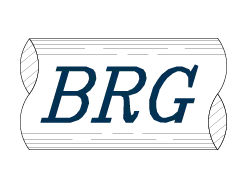
Cava Companies
Cava Companies, based in Richmond, VA, specializes in wholesale real estate recapitalization and other related services. With a vast rental portfolio, the firm develops and manages a wide array of real estate projects for themselves and clients. Services typically encompass everything from the initial planning and design phases to construction and property management. The company employs blue and white-collar staff across several departments, including construction, rentals, sales, marketing, technology, investments, and property management.
Challenges:
- Technology had become more of a hindrance than an enabler for scaling the organization
- need was established for a centralized structure of files, security controls, permissions, and remote access capabilities
- Unusual work dynamic: Many users worked predominately in the field and/or from home
- Company was outgrowing the default email setup
- Little to no data protection, backup, or cybersecurity controls
Scope of Engagement:
- Attained ongoing reliability, scalability, and compliance by upgrading to modern server & hybrid cloud ecosystem with long-term support .
- Migrated email system to Exchange Online and implemented one of the most complex systems of spam & malware filtering to date, with shared calendars for staff.
- Set up secure VPN for remote access and cloud data storage solution, enabling crews to submit pictures, reports, and maintain timekeeping.
- Assisted with physical move of all equipment to new office, and ensuing restoration of services.
- Flattened curve of data storage and reduced seek time required to locate files & folders between departments with a collaborative restructuring & reorganization.
- Set up ongoing managed service solutions, placing Top Notch in the company’s corner for all ongoing IT matters and new system procurement.
Outcomes:
- Important data has been consolidated to centralized server, with “hot” storage also available in SharePoint Online cloud environment.
- Proper data protection, cybersecurity, and business continuity solutions implemented, satisfying the compliance needs of investors and insurance companies.
- Establishment of a unified procurement pipeline, with the goal of phasing out end-of-life equipment and standardizing the fleet of devices within twenty months.
- Work from home and field personnel have no remaining productivity barriers
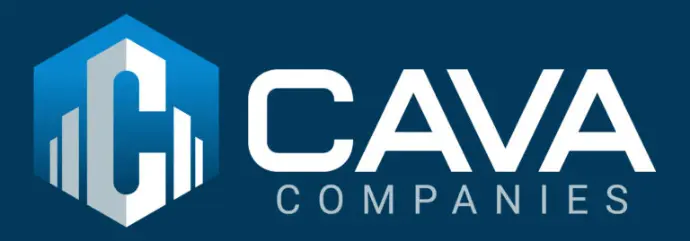
Castle Hill Cider
Castle Hill produces hard cider for consumers, tourists, and wholesale distributors. Most apples are grown on property and bred to create the signature dry “crisp” that has grown a loyal following among beverage aficionados everywhere.
CHC’s origins are traced back to the late 1700’s when Colonel Thomas Walker, a Revolutionary War veteran, sowed a harvest of rare “Pippin” apples at his farm on the eastern slope of the Blue Ridge. The modern Castle Hill Cider concept was born in 2010 and has since grown into a leading distributor for the region. The property itself boasts a tasting room for the general public, several annual festivals, and charity events, and has recently been heralded as the region’s leading event destination.
Delivering enterprise-grade Wi-Fi and back-of-house systems to a challenging rural property wasn’t easy, but it’s been an honor to enable and witness the transformation of CHC to what it has become today.
Challenges:
- Technology was not necessarily a consideration at the cidery’s inception in 2010. However, as business increased and demand for products and customer service rose, it became apparent systems were needed.
- A POS system, file sharing and accounting for the back office, and guest-facing Wi-Fi all needed to be deployed in two months’ time in preparation for the high season.
- DSL and satellite-based Internet were the only available Internet mediums at the time of opening.
- As with much of the hospitality industry, we were working with a very limited budget.

Scope of Engagement:
- Lay foundation for network using enterprise-grade wired and wireless equipment. Rollout of central server to run the network and host files. Implementation of proper backup and cybersecurity controls.
- Set up remote access for executive and accounting teams
- Utilize load balancing technology to collectively harness the power of 5 separate DSL connections as if they were a single pipe.
- Assist in wading through various bureaucratic systems to secure necessary permits and funding for the eventual rollout of fiber circuit to property
Outcomes:
- Support for 1,000 concurrent users during peak event times while back-of-house systems continue to run concurrently.
- Proper data protection, cybersecurity, and business continuity solutions have been implemented, satisfying the compliance needs of investors and insurance companies.
- Work from home and field personnel have no remaining productivity barriers
- 300% overall company growth since initial engagement with TN
Charlottesville Day School
Charlottesville Day School is a private, upscale PreK-8th grade institution that emphasizes academics, art, and social awareness. The parent base is comprised of area physicians, entrepreneurs, executives, UVA professors, and other notable professionals.
IT really can make or break academic environments, with students and staff becoming increasingly reliant on technology, both as a subject matter and as a delivery medium for curriculum. With private schools considered one of our core specialties, the school’s administration was delighted to learn we were up to the task.
Challenges:
- Campus consists of one main building and three satellite buildings-originally dependent on multiple Internet connections
- Degree of content filtering and network security required for young children, sharing the same physical mediums as the adult staff
- Outdated email, server and network infrastructure
- No routine monitoring or maintenance rhythms in place
Scope of Engagement:
- Migrate away from legacy small business servers while preserving domain properties and computer user profiles
- Work alongside contractors in construction of new gym, outfitting the entire interior and exterior with good Wi-Fi
- Conjoin satellite buildings with headquarters utilizing wireless hardware beam connections until medium-range fiber connections were made available
- Modernize phone system with enterprise-class VoIP
Outcomes:
- Ubiquitous WiFi spanning the entirety of campus, indoors and outdoors
- Proper accounting setup
- Enhanced work-from-home capabilities
- “Unified Threat Management” firewall, configured to protect children while browsing while enabling staff to conduct business
- Ongoing management of backups, cybersecurity, and network uptime, with an established cadence of routine maintenance
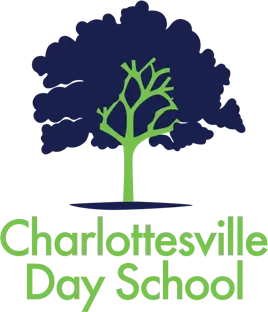
Charlottesville Dermatology
Serving patients for almost 50 years, Charlottesville Dermatology is central Virginia’s premier clinic for skin care and related medicine. From humble beginnings as a single-provider clinic, the practice boasts five physicians, a nurse practitioner, and a comprehensive team of office staff. Growing demand over the past decade provided for one office expansion and the launch of NUA- a fresh, trendy Med Spa concept focusing on cosmetic and elective procedures. Through a managed partnership with Top Notch, the office has grown to one of the largest private practices in the region despite many industry challenges.
Challenges:
- Complex legacy systems requiring support: EMR, on premise mail and fax servers, digital PBX
- Existing fleet of portables plagued with reliability and durability issues, with high per-unit price tag
- Leadership desired HIPAA compliant strategies without sacrificing convenience to providers and staff
- Outdated servers running domain and practice management

Scope of Engagement:
- Standardize documentation, user setups, and equipment
- Phase in rigid Panasonic “Toughbook” swiveling tablets for ambulatory staff
- Modernize secure and guest Wi-Fi setup, through clinic expansion and eventual addition of Med Spa suite
- Implement modern cybersecurity controls, such as unified threat management, extended detection & response, & continuous vulnerability management
Outcomes:
- Throughout partnership with Top Notch, practice has received local media accolades for both the best dermatology clinic and medical spa in central Virginia
- Well-functioning hybrid cloud model employed for data storage, email, and EMR
- Secure remote platform for outsourced accounting staff
- 300% overall company growth since initial engagement with Top Notch
Global Environment Technology Foundation
The Global Environmental Technology Foundation develops and operates technology to address environmental challenges. Through dozens of government and private sector collaborations, the organization has implemented initiatives ranging from large-scale chemical cleanups to research to strategic planning. GETF plays a crucial role in advancing environmental technologies and fostering collaboration to address pressing global challenges. Its work emphasizes the importance of innovation in achieving sustainability and protecting the planet for future generations. The Global Water Challenge, the world’s leading commission on safe water delivery, is managed by the foundation, along with several other corporate and government-led partnerships.
Challenges:
- Workforce dependent upon traditional client/server software model, comprised of almost half remote staff (even predating the COVID19 era)
- Global workforce, with staff and consultants requiring 24/7 support across 6 time zones
- Remote staff serving underdeveloped countries with major Internet limitations
- Stringent compliance requirements spanning multiple industry frameworks
Scope of Engagement:
- Migrate email systems from legacy Exchange server to Cloud-Based Exchange via Office 365
- Complete overhaul of servers, Wi-Fi, backups, and cloud services to meet the modern era
- Centralize and facilitate privileged access to accounting systems
- Ongoing management day to day help desk, procurement, networking, and remote access services
Outcomes:
- Organization’s productivity largely unaffected by onset of COVID19
- Significant cost savings over prior corporate-governed MSP relationship
- Contractors & consultants able productively engage with corporate network following a “zero-trust” model
- Successful office renovation from the physical layer upwards
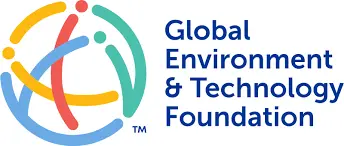
Harding Counsel
Founded by Elliott Harding in 2015, Harding Counsel specializes in criminal defense, but also practices trial litigation ranging from civil rights cases to animal rights to business disputes. Harding and his team have argued cases before the highest courts at the state and federal levels, many of which are have been high-profile, heavily publicized cases.
Top Notch services law practices and associations across the spectrum. From real estate to patent law firms, disability benefits to criminal defense, family law to corporate, to the BAR associations themselves, law practices trust Top Notch as their ambassador to technology.
Challenges:
- Young company on limited budget
- Oversaturated market conditions
- Zero existing infrastructure
Scope of Engagement:
- Provide & set up new systems
- Centralize data spread across multiple personal platforms
- Website revisions, optimization, and additional content generation
- SEO link building campaign promoting website
Outcomes:
- Scalable and secure IT platform
- First page of organic & locale-specific search results
- In business thriving 5 years following initial engagement

Hussmen Financial
Hussmen Financial was founded as a financial services firm specializing in tax prep, outsourced bookkeeping, and other CPA services. It has since expanded its offerings to include fee-based investment, advisory, and consulting. Clients range from prominent business people to family trusts to pensions and endowments.
For years, the firm maintained a traditional office space in the urban core of Richmond, VA. COV19 and other industry trends lent to the natural diversification and expansion, enabling the firm to pursue long-distance client relationships and foster a “work from home” culture.
Challenges:
- Technology in need of a refresh, with most computers nearing or past end of life
- Legacy Email platform still dependent on local mail servers, requiring heavy upkeep to be reliable
- Reliance on legacy analog telephones and faxing
- Necessity to support both traditional and cloud models to support importing and administering client data
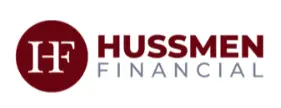
Scope of Engagement:
- Spin up proper domain organization using Active Directory. Organize data onto centralized shares and move database platforms to virtual machines.
- Implement local, virtual, and offsite backup plans
- Migrate email systems to Exchange Online
- Eventually migrate server and telecom infrastructure to private cloud hosting
Outcomes:
- “Work from Anywhere” capabilities without fundamentally changing the nature of the setup
- Business class phone system features, allowing users a choice of traditional desk phones, PC’s or softphone apps to participate
- Compliance with industry frameworks and vendor specifications
Keswick Hall & Golf Club
Keswick Hall & Golf Club is a historic estate nestled among the rolling foothills of the Blue Ridge, between Charlottesville and Richmond Virginia. Today, the property boasts a full-featured country club, hotel resort, dining mecca, and gated community of over 100 upscale homes. The member base is comprised of area physicians, entrepreneurs, executives, UVA/UR professors, and other notable professionals.
Once a flagship Orient Express portfolio hotel, the property began to face challenges in the new millennium common to the industry: Orphaned from the franchise model, the property (including technology systems) had to be rebuilt with a degree of autonomy never previously required. Full time talented IT staff from neighboring portfolio hotels were brought in to modernize the setup, and progress was being made. Beneath the surface, however, a dangerous scenario was brewing: With more moving parts than almost all other businesses, the “keys to the kingdom” were held by only one or two individuals.
In the wake of the resident staff’s untimely departure, Top Notch was brought in to restore order, finish the original technology migration, and install proper power and data protection. We would also fill the support void with as-needed user helpdesk for the club’s blue and white-collar staff.
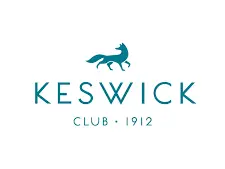

Challenges:
- Complex infrastructure layout, with the furthest satellite building located ½ mile from the center property.
- Extremely limited support or documentation available for existing setup
- Hotel property management, reservations, member management, and restaurant software were all individual applications with some requiring integrations.
- Aging computer systems and networking equipment
- Wi-Fi coverage was unpredictable at best and only covered indoors
- Entire compound highly susceptible to lighting strikes, flooding, and other nuisances beyond human control
Scope of Engagement:
- Retire older 2008 and 2012 servers from setup, without disrupting system state of user workstations
- Set up ongoing managed service solutions, placing Top Notch in the company’s corner for all ongoing IT matters and new system procurement.
- Golf and pool pavilions bridged with main compound via wireless hardware point to point solution.
- Connect remote golf maintenance building with separate Internet connection to main company resources
- Build virtual desktop infrastructure for out of state reservations teams
- Oversee property-wide upgrade of Oracle Opera Management system
Outcomes:
- Attained ongoing reliability, scalability, and compliance by upgrading to modern server & hybrid cloud ecosystem with long-term support
- Important data consolidated to centralized server, with “hot” storage also available in SharePoint cloud
- Food and beverage system linked with hotel PMS
- Medium range underground fiber links all satellite officers with main complex
- Real-time asset management and tracking in place for all IP based equipment
- Supported IT and technology improvements through nine-figure renovation project, ultimately leading to the successful acquisition and integration following the Riverstone Group’s release of the property in 2021.
Mangham Associates
Mangham Associates is a financial advisory firm managing pension funds, foundations, and other endowments. Founded in 1991, the firm’s portfolio had grown to over $4,000,000,000 in AUM by the time of its acquisition and integration into Heritage Wealth Advisors.
By the time Mangham retained the services of Top Notch, the firm had been through several IT companies. In the words of President and founder, Joel Mangham, every firm did a fine job but none delivered the way Top Notch did. Registered investment advisories, broker dealers, and private capital firms continue to represent a large percentage of the Top Notch client base.
Challenges:
- Too many vendors across the networking and telecom space
- Company had amassed terabytes upon terabytes of client information dating back to the early 1990s
- COV19 had accelerated the company’s shift to a decentralized remote platform, but existing infrastructure and IT weren’t consistent with company goals
- Compliance with FINRA and other industry frameworks
Scope of Engagement:
- Migrate traditional client/server setup to a combined public & private cloud infrastructure
- Implement best in class mail security and retention controls
- Connect existing machines to Sharepoint file environment mimicking traditional setup for familiarity
- Convert phone system to recommended VoIP solution and set up analog ATA for fax capabilities
Outcomes:
- Improved system efficiency while meeting or exceeding all regulatory requirements
- Overall trouble tickets were cut in half following initial migration
- 2024 saw successful acquisition and integration into Heritage Wealth Management
- Lowered overall monthly IT costs

Richmond International Airport
Since 1927, Richmond International Airport has operated as the primary commercial airport for the region. Over the last decade, the facility experienced rapid growth consistent with the city of Richmond and surrounding areas. To accommodate the additional traffic, the airport underwent two expansions since the turn of the millennium, resulting in a bi-level atrium for departures & arrivals, and the construction of eight additional gates.
As with many public works projects, technology considerations were an afterthought, and subsequent renovations simply piled more equipment and miles of wiring onto the original server and Wi-Fi setup. Essentially bursting at the seams, users ranging from ATC to gate agents to the public felt the squeeze of the additional pressure on outdated equipment and systems. The airport’s public Wi-Fi performance had a reputation among travelers as “worst in the nation”. Eventually, a need for modernization was realized, and the request for assistance at all levels (as well as a future ongoing technology partner) was generated.
Challenges:
- Portions of concourse, gate connections and public Wi-Fi dependent on wireless repeater solutions
- Extremely large physical footprint with little to no device health monitoring
- Local and cloud environments subjected to five individual regulatory frameworks
- Odd dynamics for resource sharing with privately-owned restaurants and stores
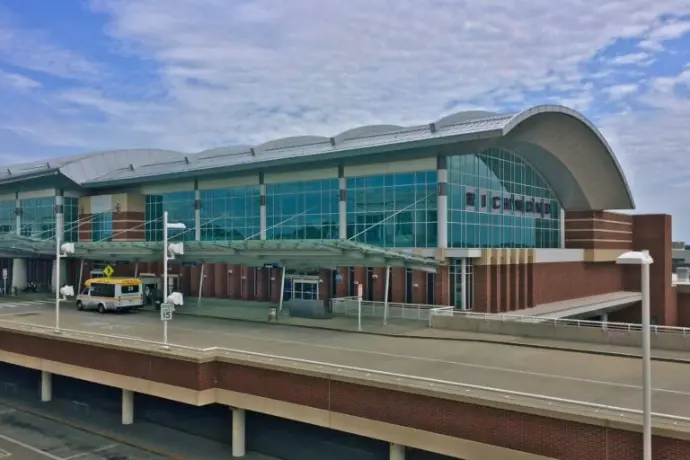
Scope of Engagement:
- Upgrade virtual servers and general networking backbone of systems with new versions
- Enhance storage capacity by 500%
- Introduce high availability redundancy solutions for uptime & data backups
- Eliminated the need for wireless boosters and repeaters by completing improvements to the physical layer
Outcomes:
- Improved Wi-Fi coverage and reliability
- Backbone now consists entirely of multi-mode fibre and last mile connections as CAT5
- Modern cybersecurity controls
- On-time flight departure rate up one point year-after-year
Soligent Distribution
Founded in 1979, Soligent is America’s largest wholesale distributor of solar panels and related accessories. With nine distribution centers nationwide in addition to their corporate headquarters, many white-collar operations staff were left to work from home following the COV-19 pandemic. The dynamic workplace arrangements, specialty equipment used for inventory and logistics, and ambitious growth objectives would ordinarily scare away most outsourced IT firms, and for that matter, many candidates for an in-house IT position.
Challenges:
- When Top Notch was first retained in 2021, technology strategies were still very much based on pre-COVID norms
- No systems of centralized asset tracking or management for a company of over 300 users
- Computer repairs, as well as procurement and deployment of new systems, were extremely difficult once the majority of white-collar workers went remote
- Resident IT staff was disproportionately small, with high turnover rates and a select few holding “the keys to the kingdom.”
- Recent acquisition and integration left two similarly sized international companies with different technology models
- Data, email, and user management spread out across 4 different ecosystems
Scope of Engagement:
- Augment help desk, network admins and interface engineers by chiseling away at aging tickets
- Build out customized Jira Service Management instance to empower end users and resident tech teams in tracking requests, incidents, emergencies, and other projects
- Standardize company technology policies and processes
- Legitimize cybersecurity posture of physical locations, cloud infrastructure, and web sites to meet demands of investors
- Oversee construction and migration of multiple warehouses throughout the US, assimilating networks into existing company ecosystem
Outcomes:
- Average time to resolution for tickets and outages brought down to 3 hours from 2 days
- Uniform fleet of equipment, with established lifecycle policies, real-time asset management, and daily dispatching of new and repaired systems as needed from Top Notch inventory or closest drop ship locations
- Modern security tools, such as EDR/XDR, CVM, SIEM
- Sunset of last on-premises domain server with complete migration to cloud-based Azure Entra, Intune, and Autopilot in place for new system rollouts
- Reduced or eliminated dependence on AWS, Google Workspace, and on-premise servers.
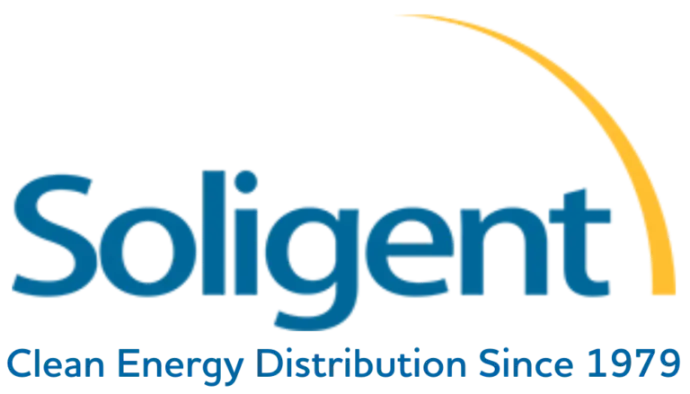
Top Notch Pharmacy
Perhaps the most profound display of business leadership capability we can showcase, our pharmacy group represents a successful attempt at diversification and serves as an everyday testament to what happens when small, growth-minded companies heed our advice, adopt our model and do things properly.
2016 was far past the ideal time to open an independent drugstore. But with the support of the community, our clients, and a coalition of other area store owners, Top Notch Family Pharmacy was launched into service. Filling a much needed void, the store caters to those who appreciate the classic pharmacy experience, offering critical health services unavailable from most chain drugstores or medical providers.
Challenges:
- New business, limited client base with little to no sales momentum
- “Out-of-reach” cybersecurity and compliance requirements from, suppliers, insurance companies and government controls
- Computers, datacom, email, and web all had to be assembled from scratch
- Uphill battle/poorly leveraged: Since the year 2000, for every new pharmacy that opens, five close their doors
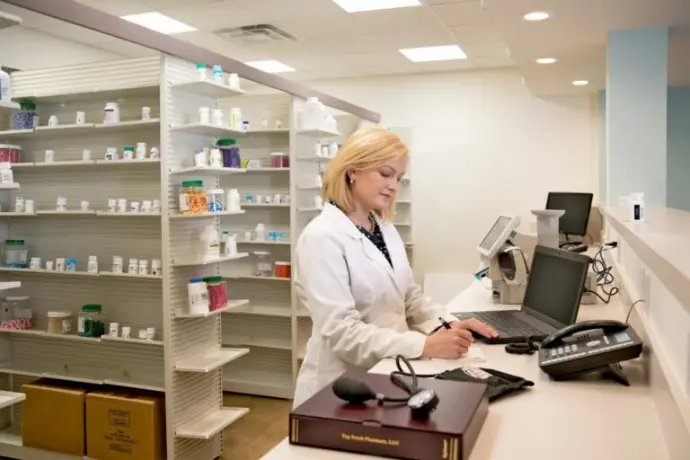
Scope of Engagement:
- Prep facility by running data cabling for computers, appliances, security cameras and TVs.
- Set up servers, workstations, security systems, telephones, software, printers, and all other core functions.
- Comprehensive online marketing plan, covering web, email, and social media
- Implement “Perata” network-based pharmacy robot system to mitigate post-COV19 staffing shortages
Outcomes:
- Zero data loss or cyber incidents over a 9yr. span
- First-in-industry VoIP system logic matches customers with solutions faster while reducing audible ringing in pharmacy
- Year after year growth in revenue
- In October 2024, surpassed Fairfax Wal-Mart for most prescriptions dispensed in a month by a single location
VASAP
Governed by the Commonwealth of Virginia’s Commission on ASAP, the Alcohol Safety Action Program is a state-sanctioned, offender-funded program. Designed to promote highway safety, plus treat alcohol dependency & substance abuse, 24 locations exist throughout Virginia. Loosely administered by state government but autonomous in nature, each office functions as its own nonprofit entity. Highly regulated and mandated but left to fend for themselves, historically these organizations have struggled with IT and cybersecurity, especially in the rural communities.
Challenges:
- Too many vendors across the networking and telecom space
- Company had amassed terabytes upon terabytes of client information dating back to the early 1990s
- COV19 had accelerated the company’s shift to a decentralized remote platform, but existing infrastructure and IT weren’t consistent with company goals
- Compliance with FINRA and other industry frameworks
Scope of Engagement:
- Scale entire fleet of systems, updating and removing malware, preparing for use
- Set up centralized server, data shares, site to site VPNs with other offices and client-based VPN for remote users
- Employ remote monitoring and maintenance to find issues before they are and increase response times
- Assimilation and integration of two area ASAP programs into one
Outcomes:
- 94% of equipment is within support range
- Cohesion between physical locations
- Meets HIPAA and other regulatory frameworks
- Seamless secure connectivity to legacy state systems

Willis Family Dentistry
Top Notch and the Willis firm were introduced as the practice was renovating a pre-digital office in the Allegheny mountains. The office require a setup in line with modern standards, as this would become the third office added to the portfolio.
Dental offices have been a longtime specialty for Top Notch, with few IT firms equipped to tackle every moving part of a dental transaction in-house.
Challenges:
- Early 1900’s structure with no datacom infrastructure
- Paper charts and film X-rays comprised the EMR of prior practice
- Billing and insurance processing run out of other offices

Scope of Engagement:
- Build and install server to run practice management and support computer systems
- Set up Eaglesoft system for EHR & imaging, retrofitting X-ray guns with digital sensors
- Build and support the practice’s first ever VPN for remote employees and collaboration with other offices
- Wire up building with Ethernet and Wi-Fi, without cutting into walls
Outcomes:
- Desktops in offices and laptops in every exam room
- Secure Guest Wi-Fi for patients
- Eventually used Churchville setup as boilerplate model for other practices
- Since initial engagement with TN, firm has scaled to 13 offices across a 300 mile radius